In interior design, as in life itself, everything involves a process. If you want to find the perfect palette of colors and materials for the project you are working on, first you will need a good moodboard, no matter what.
In case you are not very clear on how to land the ideas of a collage based on the personality of your client, today we are going to deepen into how this tool can be applied to the interior design process to obtain phenomenal results.
- The charm of the physical: colors and textures that delight the senses
- It is not accumulation when they are creative tools: The importance of a material sample book.
- To define is to limit, and that is necessary: the importance of using the right words.
- Translating words into materials: the first steps of a moodboard
- Defining the palette of colors and materials.
- Learn everything about a moodboard
A moodboard is a powerful driver of creativity, allowing you to concentrate all your key ideas in one visual space and in a tangible way. Although we know that creating a moodboard digitally can be very tempting because of its practicality, the truth is that nothing compares to creating one physically.
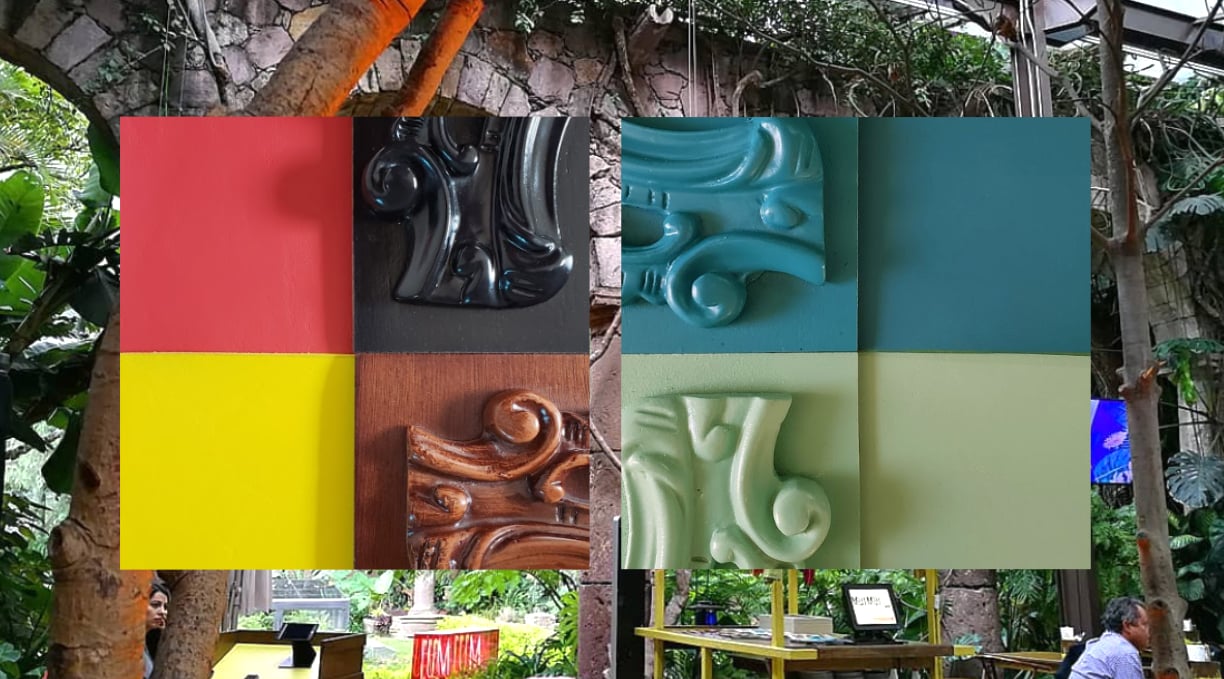
Computers are fantastic for obtaining and organizing large volumes of information, but not even this advantage makes them better than a traditional moodboard.
A physical moodboard has multiple advantages, since you can appreciate not only the color of the materials you gather, but also their texture, the feeling to the touch and the reflections of the light on them, all of which are extremely important details that are impossible to integrate with just an image and a data sheet.
All of this is important because interior design is made up of just that: sensations that are evoked and provoked by each and every one of the elements that make up and order the space.
Creating a physical moodboard has a secondary advantage, which is that it forces you to get samples of the materials you want to use, and to get those samples you must inevitably immerse yourself in the practical field: you visit material stores, find out about prices, get tips from the salespeople and in the process even end up getting to know other materials that you like better or that are perfect for another project.
Finding out what materials are available near you and how you can get them is the perfect start for making your interior design project totally viable.
As you can imagine, to create a physical moodboard you need to have many material samples, and for this the best thing to do is to start putting together your sample book; a small collection of the finishes, colors or materials available for a certain application. Its usefulness is precisely on allowing the client to have real contact with the textures.
Usually these samples have a cost, but if you make it clear that you are an interior designer and mention all the projects you have in mind, you will most likely get a discount or even obtain them as a gift.
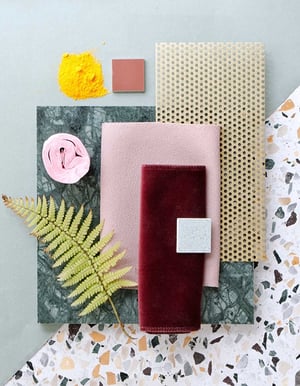
Over time, and as you progress through your professional career, you'll find that these sample books are incredibly useful for quickly defining the palette of materials you'll use in your project.
In the process of creating a moodboard, it is important to know how to use the right words, as this way we will be able to associate the concepts that are most related to them and our project will have a clear direction.
When you've only done personal projects you probably haven't had the need to use keywords to shape your ideas, but when you work with a client, having a conceptual communication is necessary for them to convey their ideas in a way that you understand.
Therefore, encourage your clients to express themselves freely, to state without shame what they want to achieve in their space.
When your clients start talking about how they imagine their space, pay special attention to adjectives, because they will determine the direction of your design.
For example, if your client wants a "cozy and warm" bedroom, it is clear that you will not opt for apparent concrete finishes or steel sheet details, but for carpets, colors in an ochre range and wood details.
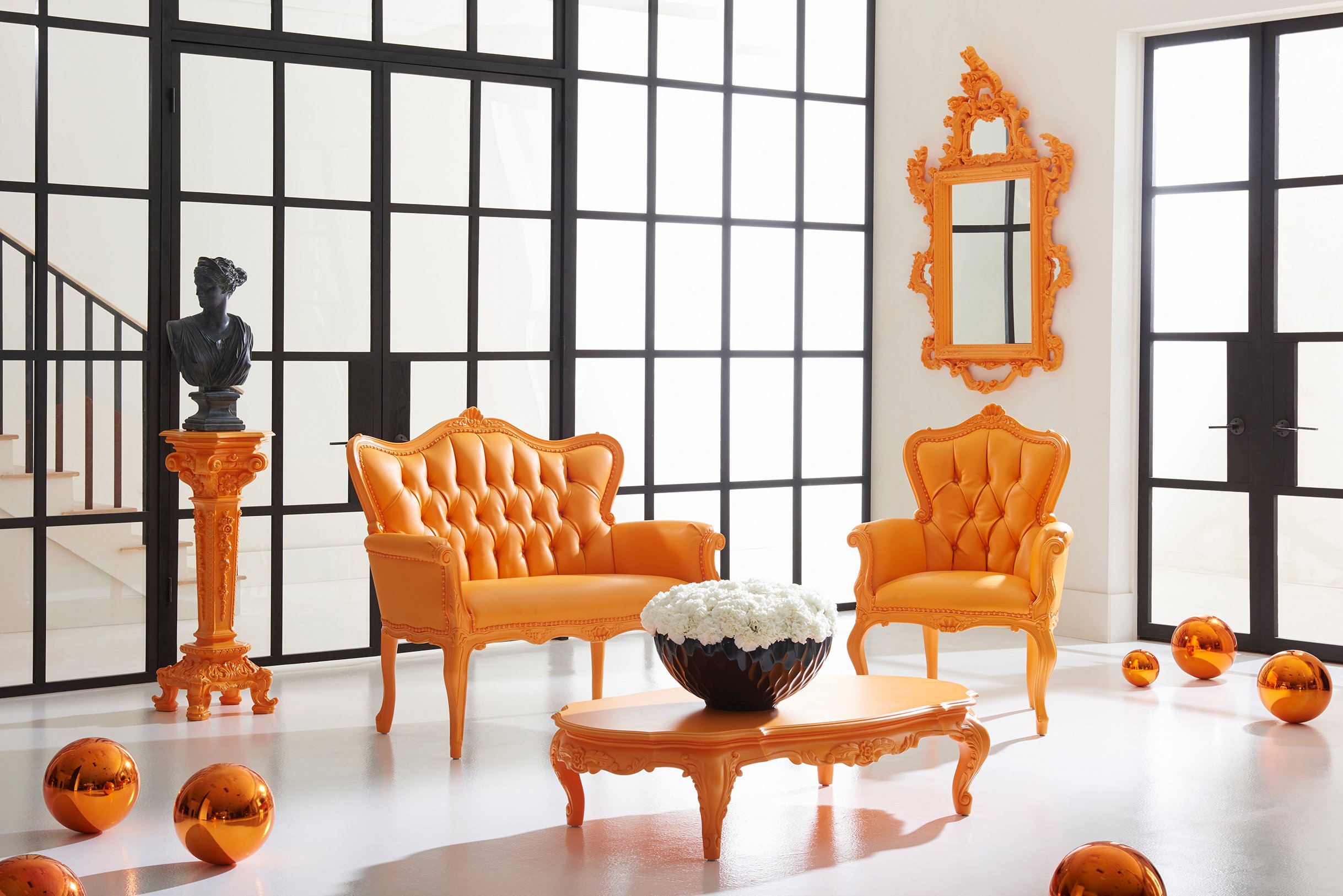
If instead, they want a room that is "modern but classic, like a palace", the main option will be materials such as concrete and ceramic tiles in a range of greys, but with accents like neo-baroque furniture.
As we mentioned a few paragraphs back, what we are doing here is simply stating the materials and finishes that are associated with each style. In order for you to do this, it is important that you have a great visual design background.
If words are not your client's best skill, don't worry, there is a last resort that never fails, and that is to show the client the images you are shuffling so that they can choose those that best correspond to the idea they have.
If you have done the previous process correctly, this last step will be extremely simple, as it consists of selecting the final list of colors and materials that you will use in the space.
Usually, the first thing to be determined is the color range or color palette. There are a number of schools and styles, but in general you can rely on the 60-30-10 principle.
This means that in a spatial composition there should be three colors: a dominant color that covers more than half of the available area (60%), an intermediate tone that covers about a third of the walls, ceilings and floors (30%), and finally an accent color that covers only 10% of what is available, and brings vividness to the composition.
Generally these accents are furniture and ornamental objects, while the dominant and intermediate colors are achieved with finishes or materials.
Once the color palette is determined, what follows is to establish which materials and objects will materialize the intentions of the space, and here is when the samples you have collected enter.
As you put the colors, materials and objects you have in mind in one place, you will see how the project practically resolves itself, as it is very easy and quick to see which elements are the most appropriate for your design
A moodboard is an extremely powerful tool for interior designers, and it's well worth your time to master it. If you're ready to take your moodboards to the next level, check out our e-book: Moodboard: The Best Way to Visualize Your Home. You'll learn everything you need to know to add a professional touch to your interior design career.

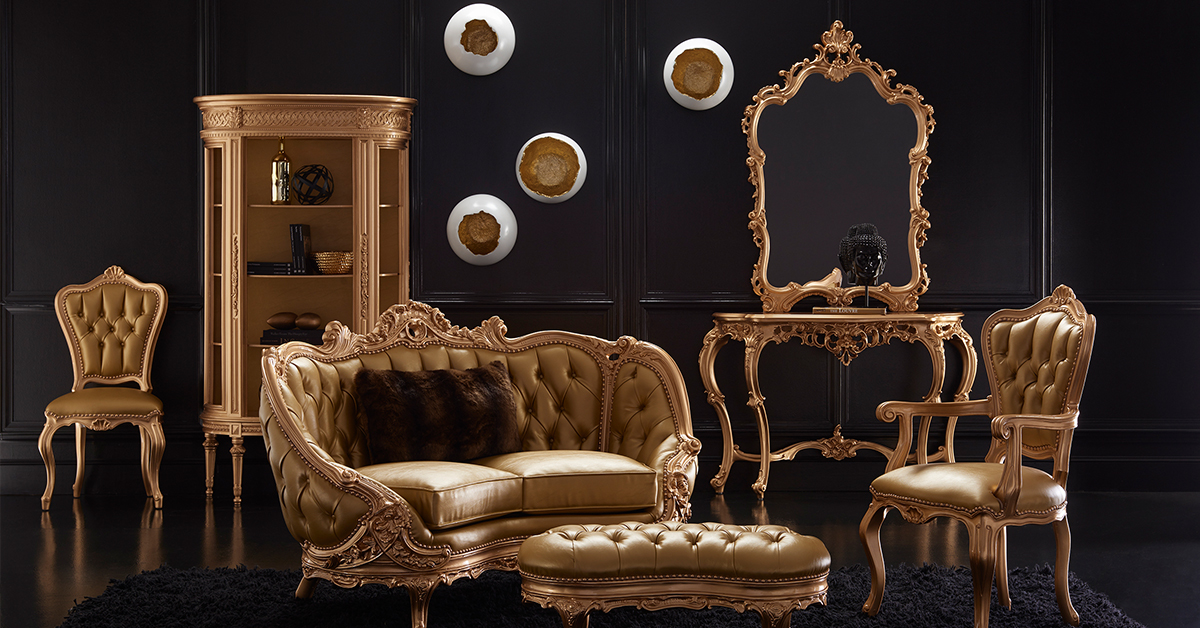
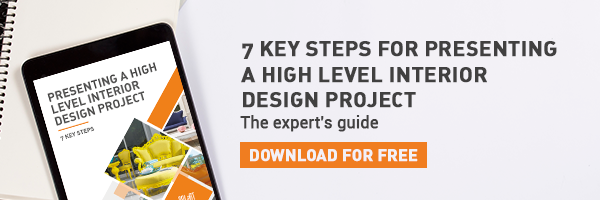


Leave Comment